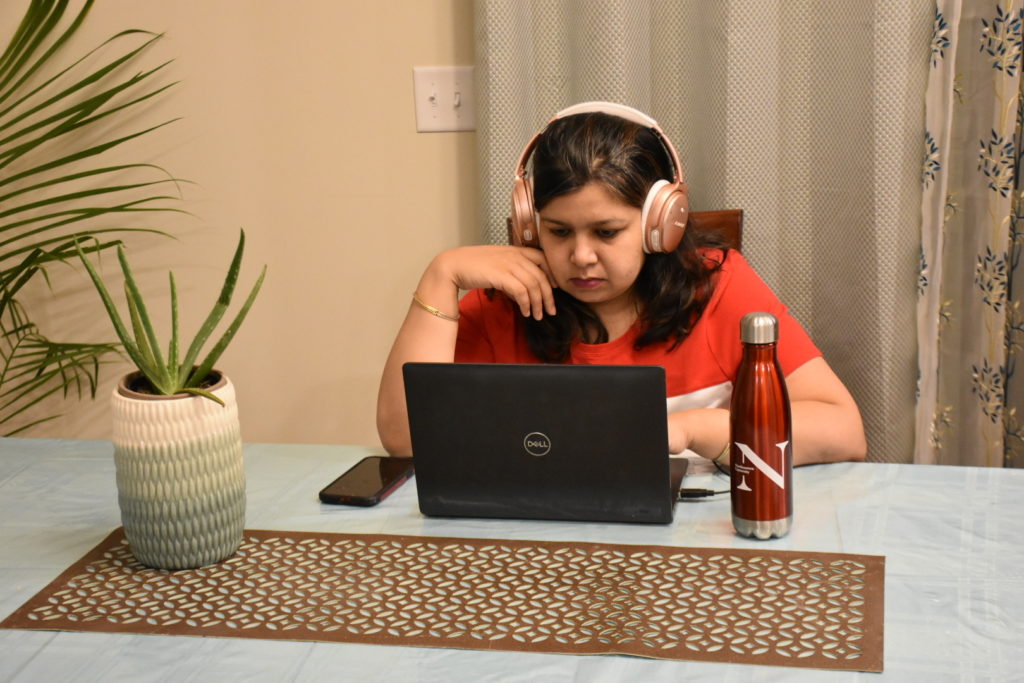
Smita Gupta has a passion for analytics.
“These technologies are always growing,” she says. “They’re never stagnant. You can always get updated with new tools and learn how to create something new.”
Gupta’s skill in analytics dovetails nicely with a related interest—collaborating with colleagues and helping businesses succeed.
“In the field of analytics,” she says, “I’m able to interact with people in roles from the top-most positions to the most entry-level—whoever there is in your company. So I meet all kinds of people, and that also keeps me engaged in working with these technologies.”
Gupta’s interest in information technology (IT) started at the Indira Gandhi Institute of Technology in New Delhi, India, where, in 2005, she earned a bachelor’s degree in technology, electronics and communications. Her first job was as a software engineer at the multinational professional-services company Accenture. It was there, she says, that she first developed an interest in data analysis and SQL. She went on to several jobs in data management in India before moving to North Carolina in 2015, where she worked first as a consultant and then as a systems analyst at software company Cotiviti Inc. She enjoyed the work, she says, but also yearned to be closer to the cutting edge in her field.
“I liked the work I was doing with data,” Gupta says, “but these new technologies were appearing, and I was interested in predictive modeling and visualization, and I wasn’t getting to work with it in the roles that I had. So, I thought returning to school might be a good option—to get a broader overview and learn more. I wanted to be able to utilize new technologies and possibly enhance my career.”
With that in mind, Gupta began the search for a master’s program with advanced analytics courses. She and her husband had recently moved to Massachusetts, and after looking at several universities online, she found the Master’s in Analytics program at Northeastern’s College of Professional Studies. She read through the curriculum and realized that it covered exactly the blend of topics and technologies she was looking for, including predictive analytics, artificial intelligence and the programming languages Tableau, Python, and R.
“What was most interesting to me,” Gupta says, “was learning about the experiential and capstone courses that could help me apply the principles and tools of analytics to real-world problems or projects within a sponsoring organization.”
Despite her excitement, returning to school after working in the professional world for a decade was also a daunting prospect. She had an established career, her daughter had just turned 6, and she and her husband were planning to have another child.
“I was scared and anxious,” Gupta says. “And I was thinking: How will I adapt to a new culture, going to school after those 10 years? All the students will be so much younger than me. And maybe the professors will be my age!”
Her husband’s support, the program’s flexibility, and the support she received from faculty and fellow students soon laid her fears to rest. She also found that, despite her worries, her professional experience made her a natural fit for leadership roles in projects and discussions.
“In my previous organization, in addition to performing analytical operations, I was also the technical leader and managed some of the teams,” Gupta says. “So, I had some experience coordinating the team and assigning tasks.”
Those skills were particularly useful, she says, when it came to the hands-on projects her classes required—projects she calls highlights of her educational journey at Northeastern. Gupta participated in both an experiential learning project—analyzing data and creating dashboards for Viacom, a leading worldwide media company—and a capstone project in which she and her team developed predictive models for a multinational footwear and apparel company.
“I learned so much in those two programs,” Gupta says, “both in terms of how data should be analyzed and the variety of techniques with which it can be presented to a target audience. The procedures we learned for generating insight were very helpful. With the support and advice of our professors, Dr. Nathaniel Lin and Dr. Alice Mello, we were able to successfully complete the projects.”
It was especially satisfying, she says, to learn that the companies had accepted the dashboards the class had created and would be implementing them in the real world.
“Our presentations went well,” Gupta says, “and our professor told us the sponsors would be using what we had prepared.”
Three months after graduating with her Master of Professional Studies in Analytics, Gupta was hired by Northeastern’s Human Resources Department, where she now works as an HRIT Data Analyst, writing scripts—essentially smaller computer programs—to analyze data. Her work provides the colleges and departments throughout the University with reports to help them increase their effectiveness, a role she loves. Her family has grown—she and her husband have two daughters now—and in her free time she enjoys painting and drawing, an interest she shares with her elder child.
“I made the right decision, to complete this program at Northeastern,” she says. “I learned a lot, and it changed my perspective and improved my analytical skills. What I really enjoy is finding the patterns within the data—generating useful insight to help people have better procedures from a business perspective. If I can do something that helps people in any way, that keeps me motivated.”